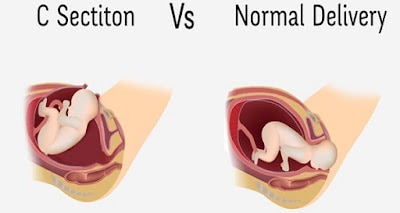Why You Should Never Opt For A C-Section (And The Dangers Of Having One)

It seems like many women today are in favor of C-Sections. Almost everyone knows someone who has either gotten one or will get one in the future. Between 1996 and 2009 C-Sections increased by 60%, but for the first time in years, the cesarean deliveries have leveled and not increased.
Experts credit the American College of Obstetricians and Gynecologists (ACOG), a nonprofit women’s health care advocacy group, with curbing the upward trend. In 2009, the group launched a public health campaign to discourage physicians and expecting mothers from undergoing unnecessary c-sections.
C-Sections Risks
C-Sections can be very dangerous and they are certainly riskier than vaginal births as it means cutting into the abdomen and exposing you to bacteria, which drastically increases your risk of getting an infection. It can also increase your odds of excessive bleeding, blood clots and even death.
What’s more, it takes an intense physical toll on your body. While recovering from vaginal birth takes just one to two weeks, post-c-section recovery can last up to six weeks. And after you recover, your c-section could complicate future pregnancies; women who have cesarean deliveries face an increased risk of placenta implantation problems, uterine rupture, bladder and bowel injuries, a second cesarean delivery, and the need for a hysterectomy, according to previous research cited in the ACOG guidelines.
C-Sections Statistics
With all of this being said, about 31 percent of births in the United States between 2009 and 2012 were cesarean deliveries. And even without data on which of those were medically necessary, it is estimated that 8% were avoidable.
Why They Became So Popular
It’s known that c-sections come with the complications listed above… so what accounted for the rise between 1996 and 2009? One reason is that c-sections lead to more c-sections. If a woman has already had a baby via cesarean, giving birth to a second child vaginally becomes riskier. Doctors are wary of performing risky procedures, both out of fear of harming the mother, and also out of fear of lawsuits. A 2010 poll published in the journal Obstetrics and Gynecology showed that 29 percent of obstetrician college members said they were performing more cesareans to avoid being sued.
Another reason is convenience — for both the mother and the doctor. Women may prefer to have c-sections scheduled around when family members might be in town to help them take care of their children, for instance. And older studies have found that c-sections are more common on Fridays and between 6 a.m. and 6 p.m.
The scary implication: Some doctors might recommend inducing labor so that they don’t have to spend their nights and weekends waiting for the baby to come.
When a C-Section is Your Best Bet
All that being said, sometimes c-sections are necessary to ensure the safety of the mother and child. Like most medical decisions, it’s ultimately up to you and your doctor to determine the best way to deliver your baby. But according to the ACOG, you might be a prime candidate for a c-section if:
- You’re carrying multiples and they’re very small or poorly positioned
- Your contractions aren’t strong enough to move the baby on their own
- The umbilical cord is pinched or compressed
- The baby has an abnormal heart rate
- There’s a problem with the placenta
- The baby is particularly large or breech
- You’re infected with an STI that could infect your baby if it were to go through the birth canal
- You have diabetes, which could lead to a larger baby
- You have high blood pressure, which can lead to preeclamsia, a dangerous condition that can damage your organs and can only be cured by childbirth (which is why an early-term cesarean delivery may be necessary).
The Bottom Line
If you can have a vaginal birth safely, you should, says Macrones. When you give birth the natural way, you face a lower rate of infection and will experience a faster recovery—so you can hit the ground running as a new mom. So before you sign off on a c-section, you should ask your doctor if you can give birth vaginally. Be wary of doctors who encourage c-sections right off the bat—especially if you’re young and relatively healthy.






